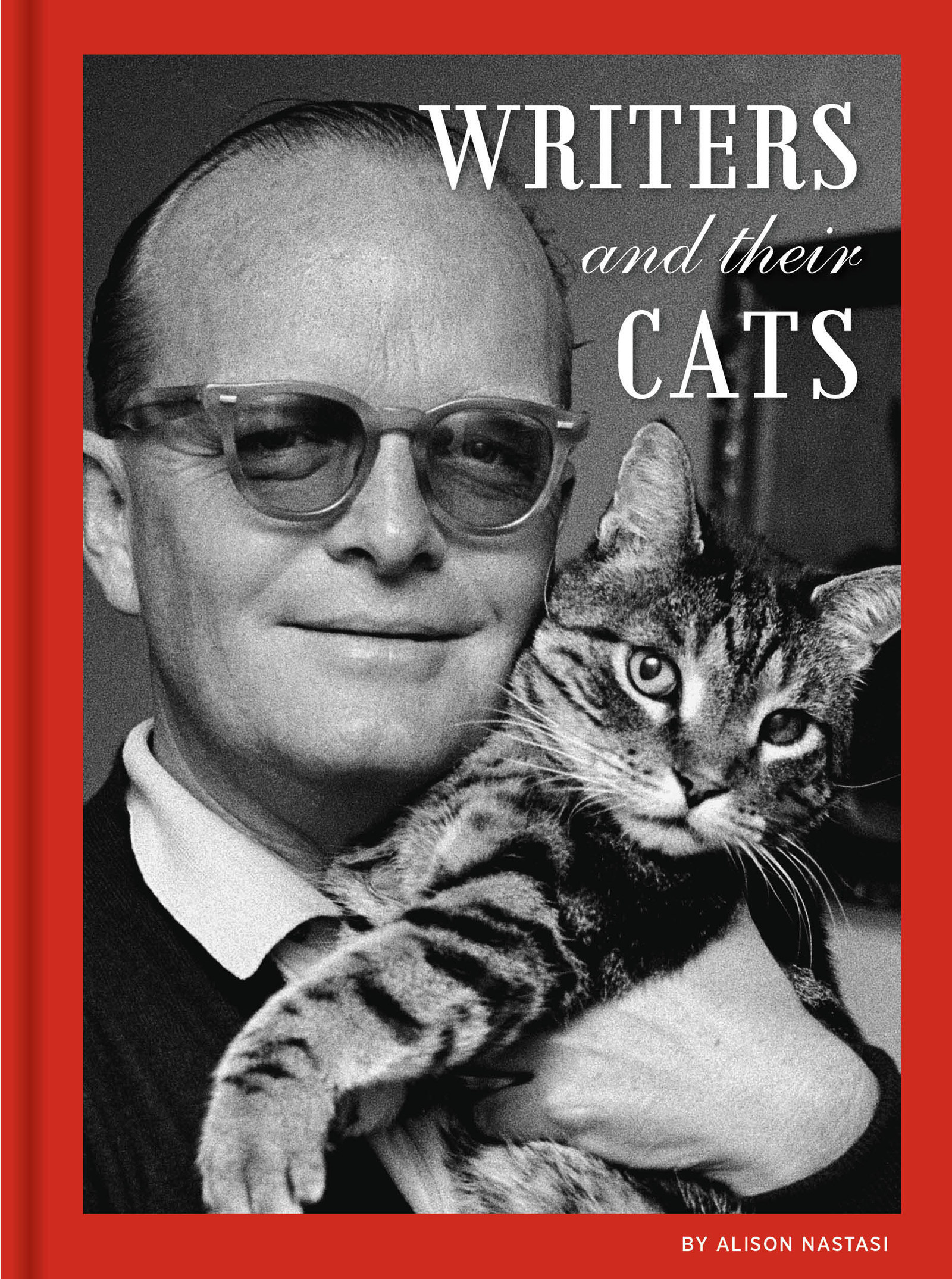In Writers and Their Cats, author Alison Nastasi presents behind-the-scenes stories of writers and their feline friends. Below are some of our favorites.
Alice Walker
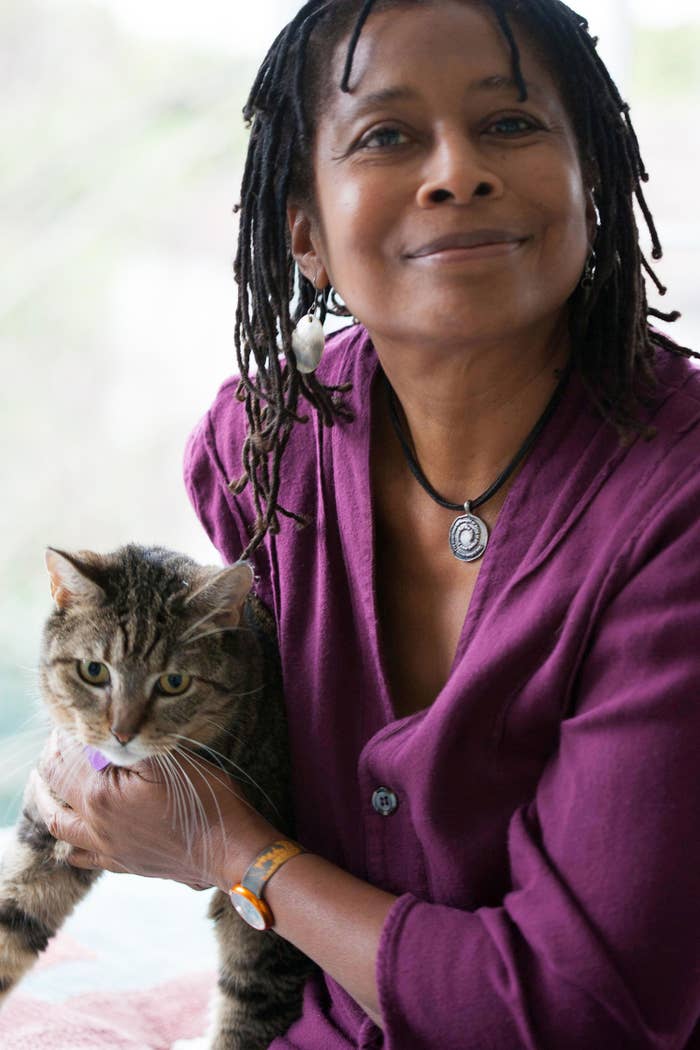
Alice Walker, activist and Pulitzer Prize–winning author of The Color Purple, spoke about one of her beloved cats in a 2007 interview in the Buddhist magazine Lion’s Roar. “My cat lived a very rough life before she arrived in my home. She has one tooth that’s broken and another that’s kind of long on the other side. She’s snaggletoothed,” Walker shared. “A stranger might look at her and say, ‘Oh, she has imperfect teeth.’ But I look at her and see the absolute perfection — the charming perfection — of her imperfection. It gives me so much information about the kind of life she has had, and the kind of soul she has probably fashioned.”
Walker, whose novels examine racism and patriarchal culture, wrote about her sometimes difficult relationship with cats as an author who travels frequently in Anything We Love Can Be Saved: A Writer’s Activism. Her former kitty Willis was named after the Willis Avenue Bridge in New York City, where she was rescued. A special cat came into Walker’s life following her divorce. “I named this cat Tuscaloosa, which means ‘Black Warrior’ in Choctaw,” she writes. “As is clear from his name, I felt extremely vulnerable, suddenly all alone in the big city, and very much in need of protection ... We lived in a tiny three-room, second-story flat in Park Slope, Brooklyn ... Often, as I worked at my desk, which overlooked the street, Tuscaloosa sat at my feet. More often I wrote propped-up in bed; he snoozed, placid and warm, by my knees.”
Walker later met her cat Frida at a shelter, “a two-year-old long-haired calico with big yellow eyes and one orange leg ... I named her Frida, after Frida Kahlo. I could only hope she’d one day exhibit some of Kahlo’s character. That despite her horrendous kittenhood she would, like Kahlo, develop into a being of courage, passion, and poise ... When it is bedtime I pick her up, cuddle her, whisper what a sweet creature she is, how beautiful and wonderful, how lucky I am to have her in my life, and that I will love her always.”
Chester Himes
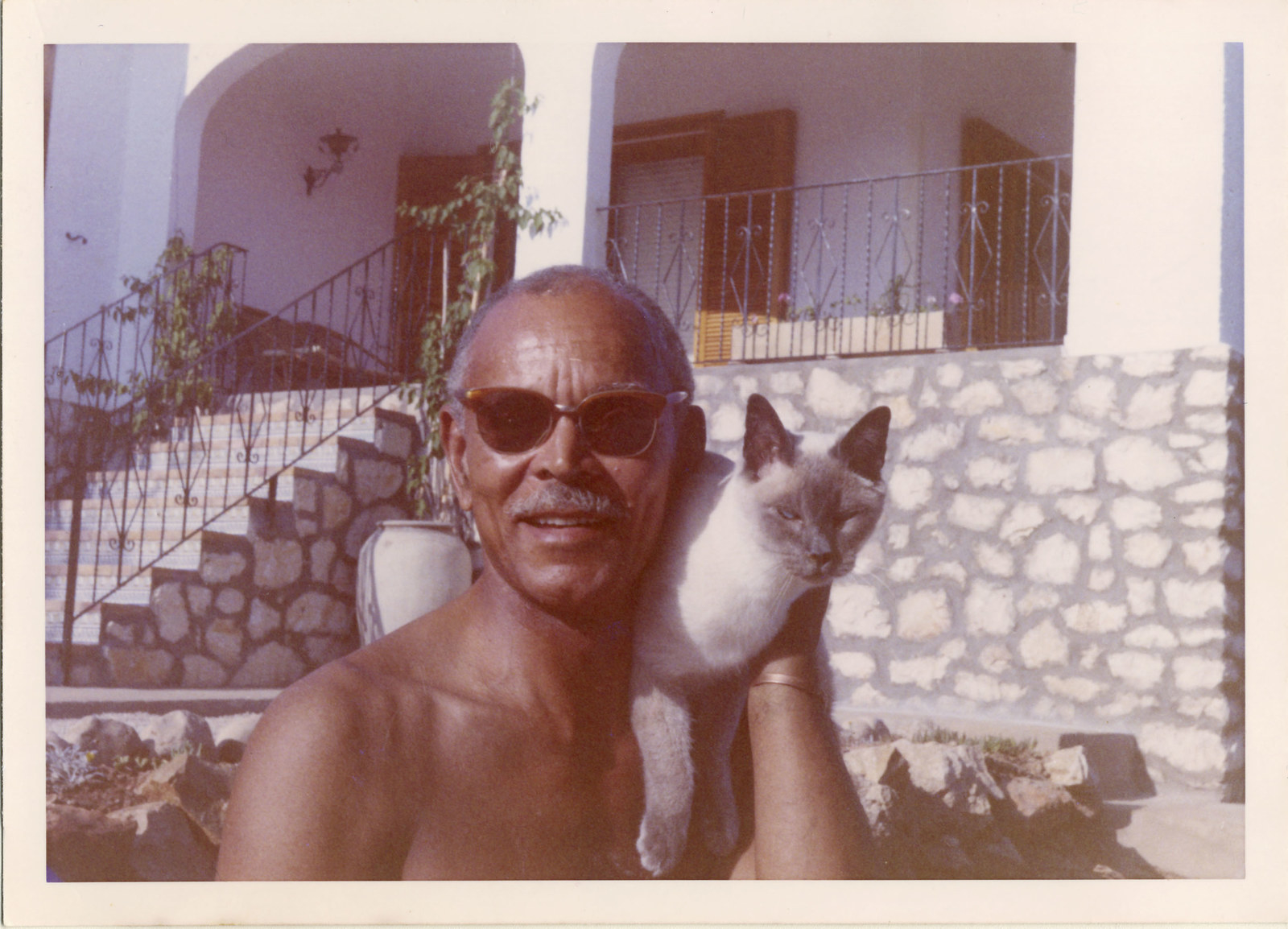
Chester Himes, considered the father of the black American crime novel, wrote stories that mirrored the real-life violence and racism happening in the world around him. “American violence is public life, it’s a public way of life, it became a form, a detective story form,” he once said. “So I would think that any number of black writers should go into the detective story form.”
One reprieve from the chaos of everyday life was Himes’s cats, particularly his blue point Siamese called Griot (pictured above). “Griot is named after the magicians in the courts of West African kings,” Himes said in a 1972 interview. Griot was Himes’s constant travel companion. When the If He Hollers Let Him Go author didn’t bring Griot along during his adventures, Himes paid the price. In a 1971 interview, Himes gave while in Stuttgart, Germany, he claimed he couldn’t stay away from home too long since Griot would “certainly destroy [his] studio back home and chew up all [his] books.” After Griot passed away, Himes kept a kitty named Deros, who the writer loved for her sweet personality.
Doris Lessing
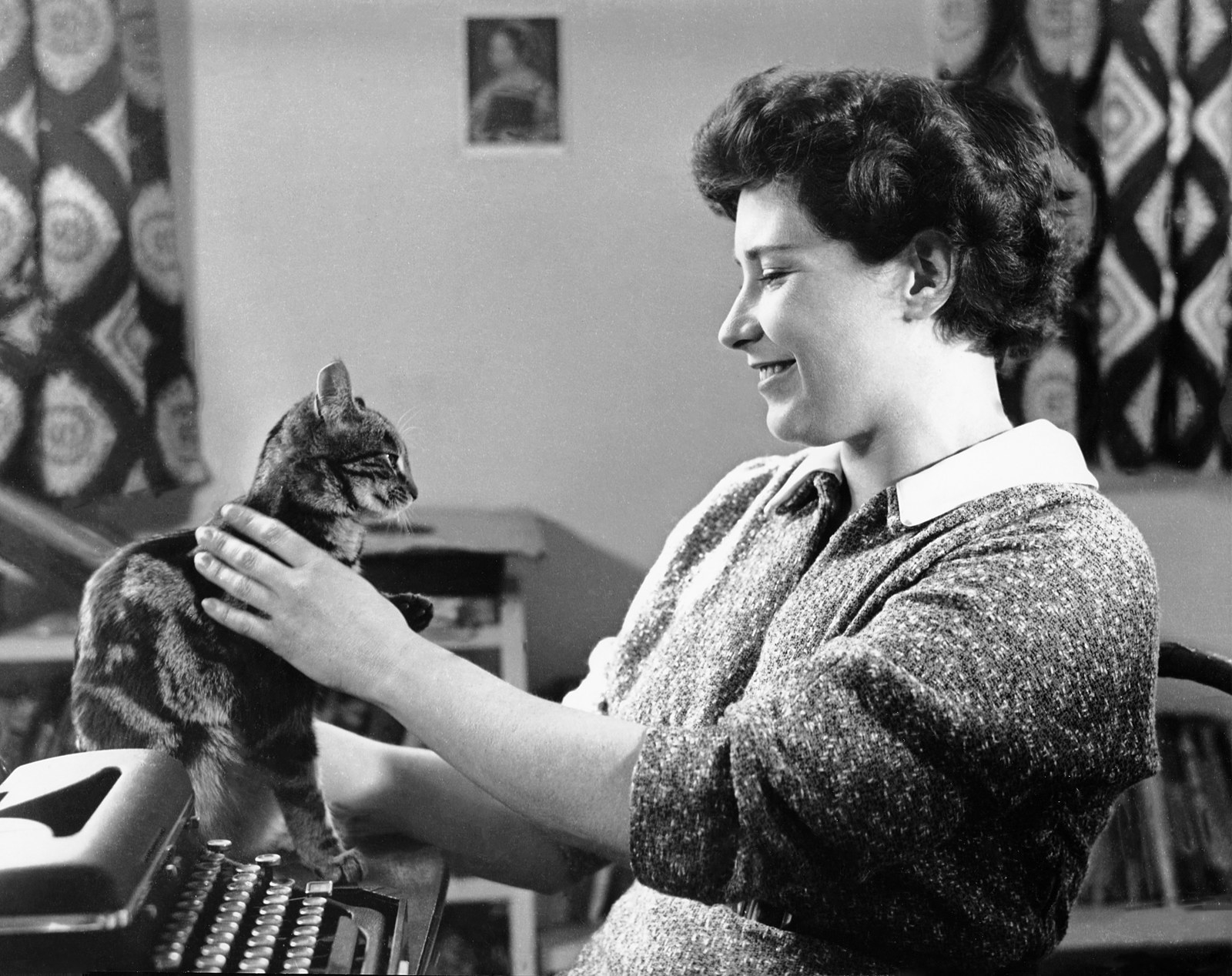
Doris Lessing, the Nobel Prize–winning, Iran-born British novelist of books including The Golden Notebook, was raised on a farm in Southern Rhodesia (now Zimbabwe), which contributed to her affection for animals, particularly cats. “What a luxury a cat is, the moments of shocking and startling pleasure in a day, the feel of the beast, the soft sleekness under your palm, the warmth when you wake on a cold night, the grace and charm even in a quite ordinary workaday puss,” Lessing once said. “Cat walks across your room, and in that lonely stalk you see leopard or even panther, or it turns its head to acknowledge you and the yellow blaze of those eyes tells you what an exotic visitor you have here, in this household friend, the cat who purrs as you stroke, or rub his chin, or scratch his head.”
Lessing wrote about her most beloved cat named El Magnifico in a short memoir titled after the tiny beast. “The cat I communicated with best was El Magnifico,” she told the Wall Street Journal in 2008. “He was such a clever cat. We used to have sessions when we tried to be on each other’s level. He knew we were trying. When push came to shove, though, the communication was pretty limited.” Other Lessing cat-centric books include 1967’s Particularly Cats and 1993’s Particularly Cats and Rufus the Survivor, which mention Lessing’s half-Siamese darlings Gray Cat and Black Cat.
Gillian Flynn

With a background in journalism and a childhood filled with books and horror movies (Psycho on repeat), Gillian Flynn was destined to become an author of novels that explore society’s dark undercurrent. Her international bestseller Gone Girl became a hit film directed by David Fincher. Flynn wrote the award-winning screenplay and earned a spot on the short list of authors who successfully translated their books for the big screen.
It seems fitting that Flynn, who has written about riveting female villains, serial killers, and deadly satanic cults, keeps a black cat as her feline familiar, but she eschews the spooky stereotypes. Roy (pictured above) is one of four black cats Flynn has called her pet since she was a child. “I have been a big believer that black cats are the best: affectionate, laid-back, and sweet,” she told me. “Roy is a cat-dog. He trots to the door when we come home. He lolls on our laps the second we sit down. You can hear his purr coming for you from three rooms away.” And if you’re wondering who crafted the most tense parts of Flynn’s gritty psychological thrillers, it was definitely Flynn’s sharp-clawed writing partner: “Roy has ‘helped’ me with my last two books and all my screenplays. He prefers to sit on the keyboard, so he can type things like GY*T^&$$^R^&h&&G!!! Now that I work on a tread desk he sits by me, watching. He’s a very sweet sentinel.”
Haruki Murakami
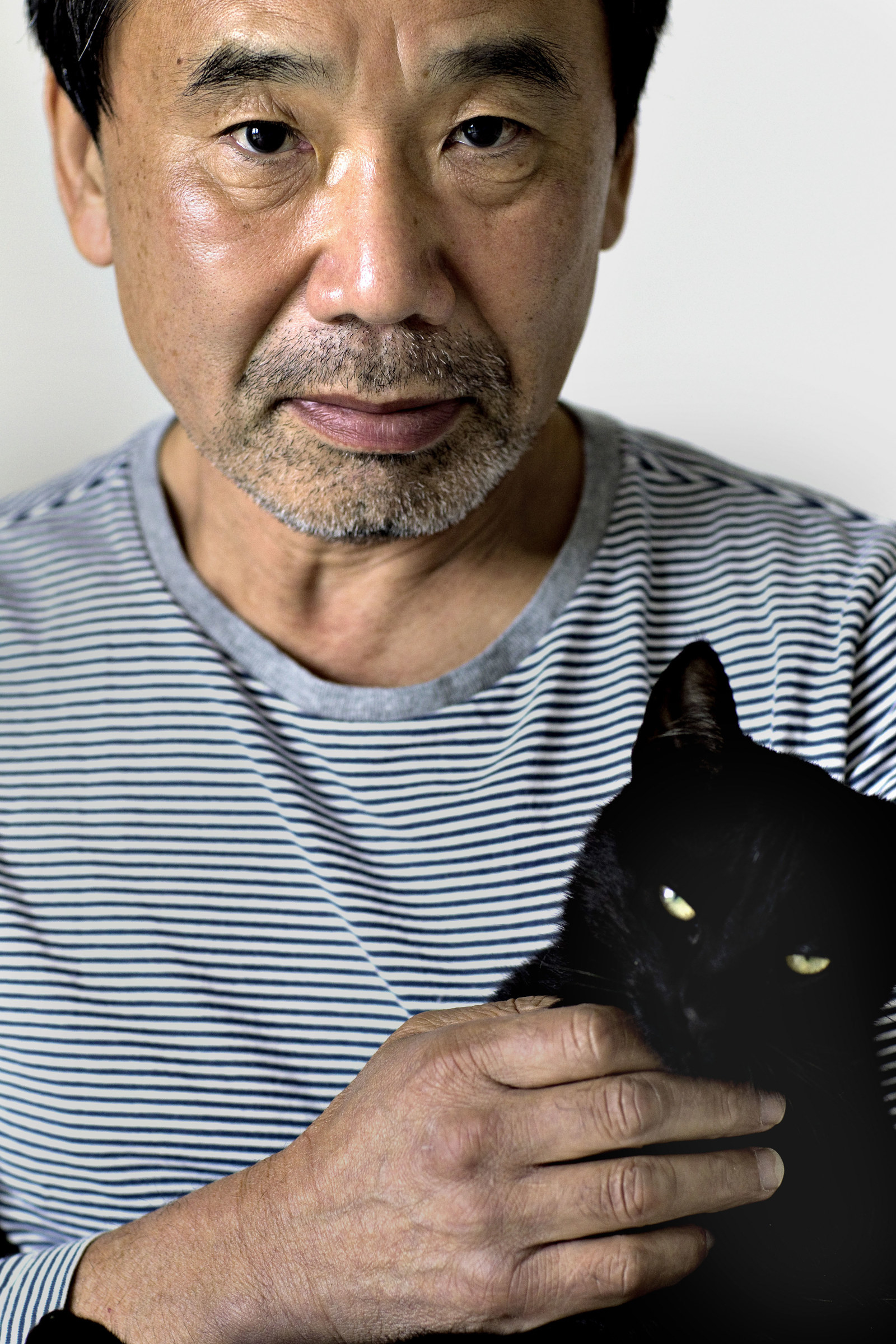
In an essay titled “Choju Neko no Himitsu” (“The Secret of an Old Cat”), acclaimed Japanese novelist Haruki Murakami tells a story about how he asked an executive at publishing company Kodansha to take care of his cat while he traveled. In exchange for the favor, Murakami promised he would write a novel for the company. That book turned out to be his 1987 bestseller Norwegian Wood, about a Tokyo college student’s very different relationships with two women. It catapulted him to literary stardom. In the same essay, the author talks about writing his first book Hear the Wind Sing: “I still remember well the days when I was writing my first novel at night, with the cat on my lap and sipping beer. The cat apparently didn’t like me writing a novel and would often play havoc with my manuscript on the desk.”
Murakami, widely considered one of our greatest living writers, features cats regularly in his fiction — sometimes a seemingly mundane detail, other times an enigmatic symbol or omen. His book The Wind-Up Bird Chronicle stars a missing cat; Kafka on the Shore features a character who can communicate with lost cats; and the essay “On the Death of My Cat” shares Murakami’s personal stories about the many mewling muses he’s shared his life with: Kirin, Butch, Sundance, Mackerel, Scotty, Calico, Peter, Black, Tobimaru, Croquette, and (fittingly) Muse.
In 1974, Murakami, an avid jazz fan with an enviable vinyl collection, opened up a club in suburban Tokyo and named it Peter Cat after his pet. The venue closed in 1981. During the day, patrons came for coffee. By night, they were served food and drinks and enjoyed live jazz. Murakami often played bartender, cleaned, and acted as DJ. The space was decorated with countless cat-themed accessories and figurines.
Jorge Luis Borges
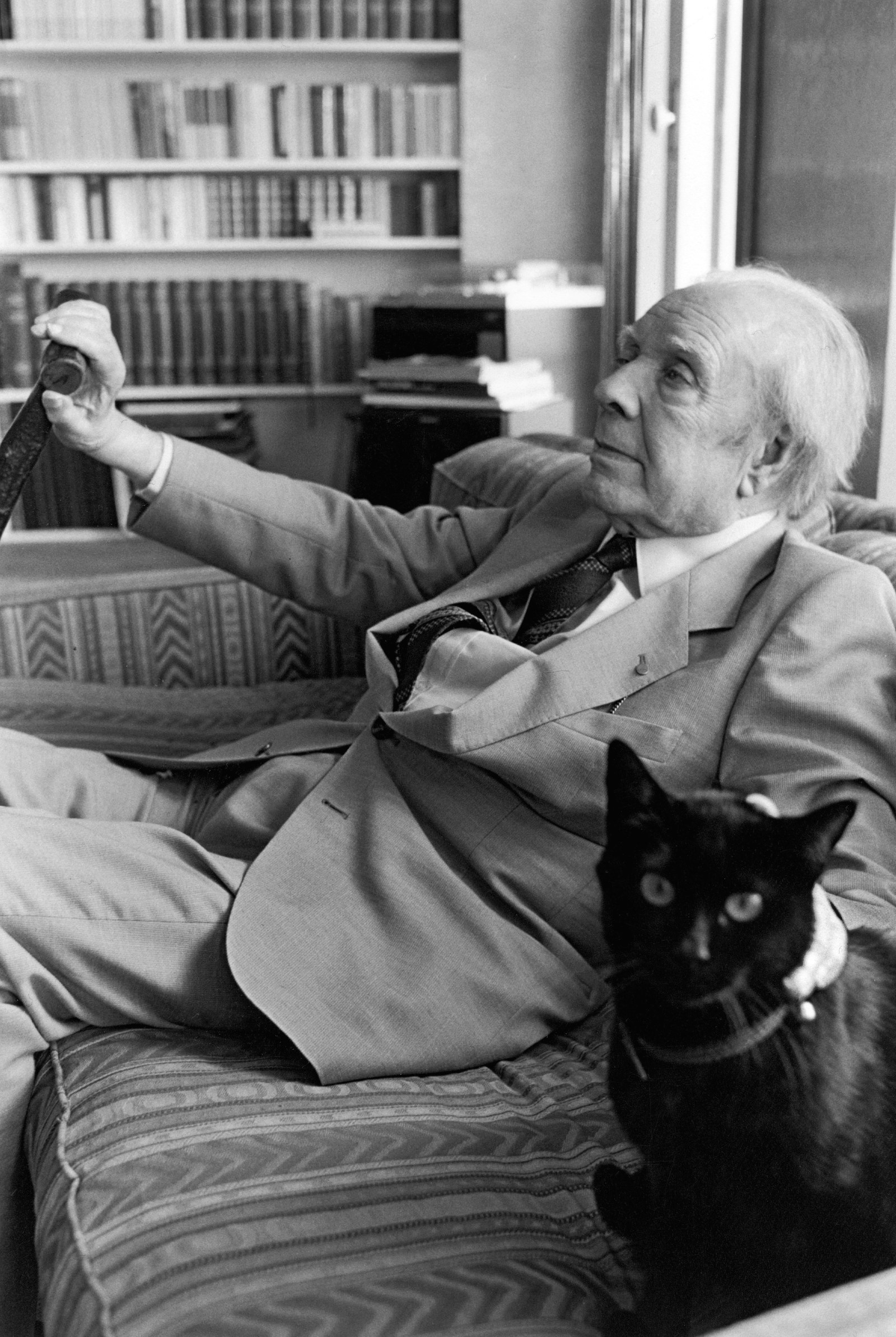
“You belong to another time / You are lord / Of a place bounded like a dream,” the Jorge Luis Borges poem “To a Cat” reads. The Argentine poet, essayist, and short story writer who helped popularize Latin American literature shared his humble life with several cats, including a large white feline called Beppo, named after a character in a Lord Byron poem about a man who is lost at sea. Borges wrote his own poem for his companion: “The celibate white cat surveys himself / in the mirror’s clear-eyed glass, / not suspecting that the whiteness facing him / and those gold eyes that he’s not seen before / in ramblings through the house are his own likeness. / Who is to tell him the cat observing him / is only the mirror’s way of dreaming?”
Patricia Highsmith
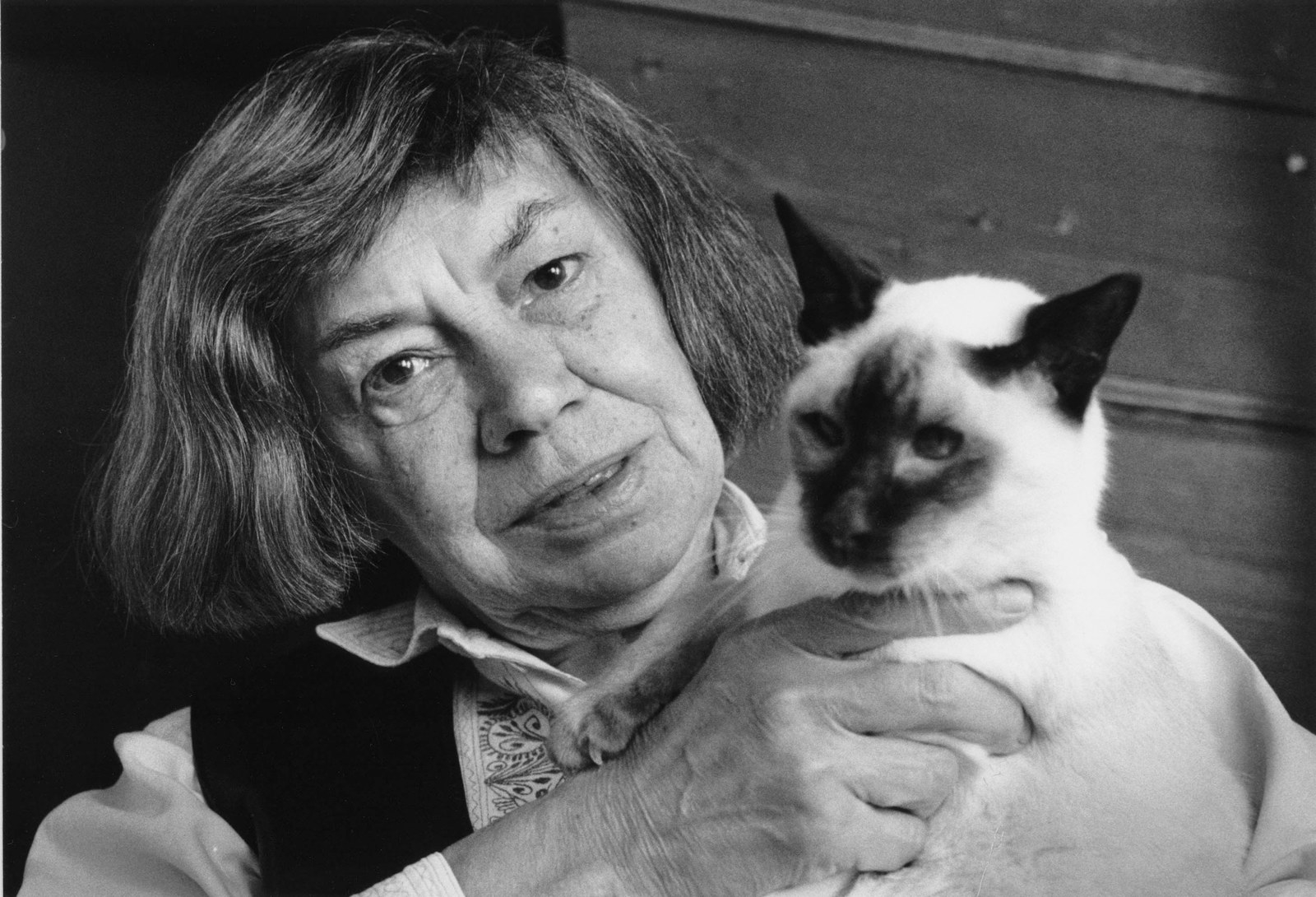
Patricia Highsmith, author of The Talented Mr. Ripley and Strangers on a Train, didn’t have a reputation that gave people the warm fuzzies, but her gruff personality seemed to soften around her cats. She seemed to prefer them to humans. “My imagination functions much better when I don’t have to speak to people,” Highsmith once said. Still, she always looked to her pet to tackle the day head-on. “When I get up in the morning, I first of all make the coffee and then I say to my cat, we’re going to have a great day,” the author told Naim Attallah in an interview.
Highsmith shared her life with many cats, including her chocolate point Siamese named Semyon (who loved to chase his tail), Sammy, Spider, Charlotte (who wouldn’t stop crying when Highsmith passed away), and an unnamed “brindle cat” she got for her birthday. Spider was eventually given to Scottish author Muriel Spark who said, “You could tell he had been a writer’s cat. He would sit by me, seriously, as I wrote, while all my other cats filtered away.”
Dogs never seemed to make it very far in a Highsmith novel, but cats always survived. Highsmith was also known to sketch her cats, despite spending most of her time with them curled around her typewriter. When asked what she always dreamt of having in life, Highsmith responded: “A charming two-story house, good martinis and a good dinner with French wine ... a wife, and books and a Siamese cat.”
Ursula K. Le Guin
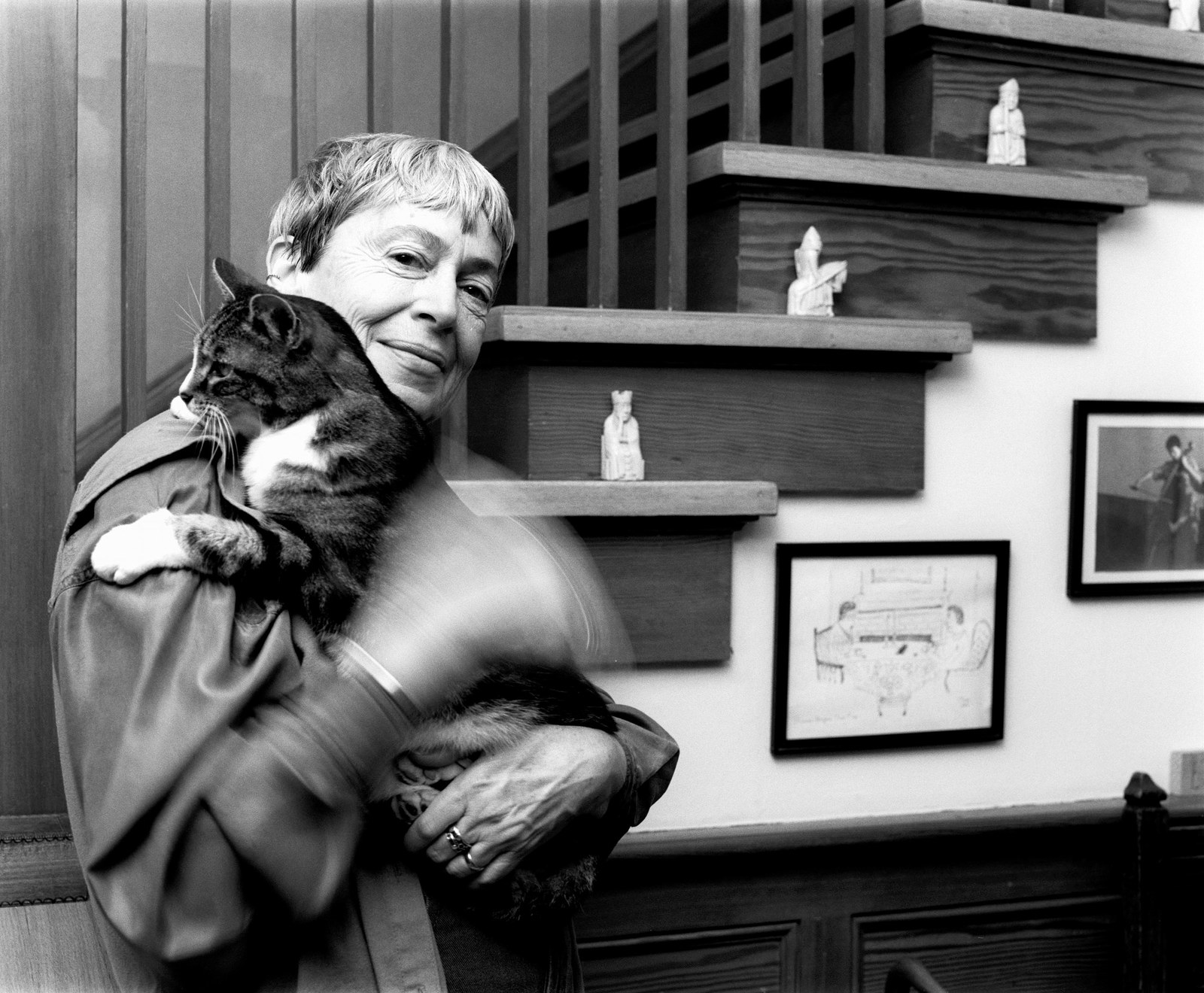
Drawing on sociological, anthropological, and Taoist concerns, novelist, poet, and essayist Ursula K. Le Guin created genre fiction that was inspired by the landscape and profound elemental forces. Her first trip to the Eastern Oregon desert led her to write her 1970 novel The Tombs of Atuan. The 1985 feminist novel Always Coming Home reads in part like an anthropologist’s field notebook.
Even Le Guin’s feline companions demonstrate a strong connection to nature. Her former tabby Lorenzo, Bonzo for short (pictured), was born to a tiny cat Le Guin called Mother Courage. “She had to live feral at the old ranch, but had known better days,” Le Guin told me. “The children she brought up in the wilderness were cheerful, mannerly, intelligent, resourceful, brave hunters, affectionate friends. Bonzo was one of the great cats of my life.” When it was time to eat breakfast, Bonzo spared no mercy. “I was still asleep [and] he would walk delicately across my face, and when I opened my eyes there were his big golden eyes two inches away. Best alarm clock ever.”
Le Guin’s last feline friend was Pardner, nicknamed Pard. The author even wrote his autobiography, My Life So Far. “He sleeps a lot on the writing desk next to my computer,” she shared. “If I get very emotionally involved in what I’m writing (letter or fiction), it makes him uneasy and he comes over and sits on the mouse and purrs. Try writing with a cat sitting on your mouse.”
When asked why she was fond of cats, Le Guin said, “Because they are beautiful and funny and self-respecting and mysterious.” The author planted tongue firmly in cheek when asked why there seems to be a special relationship between writers and cats: “Maybe because writers don’t want to have to stop writing and walk the dog?”
Excerpted from Writers and Their Cats by Alison Nastasi, published by Chronicle Books 2018.
Writers and Their Cats is available now.
